
German Blue Ram Cichlid Care, Breeding, Size Guide | Mikrogeophagus Ramirezi
Contents
German Blue Ram Basic Information
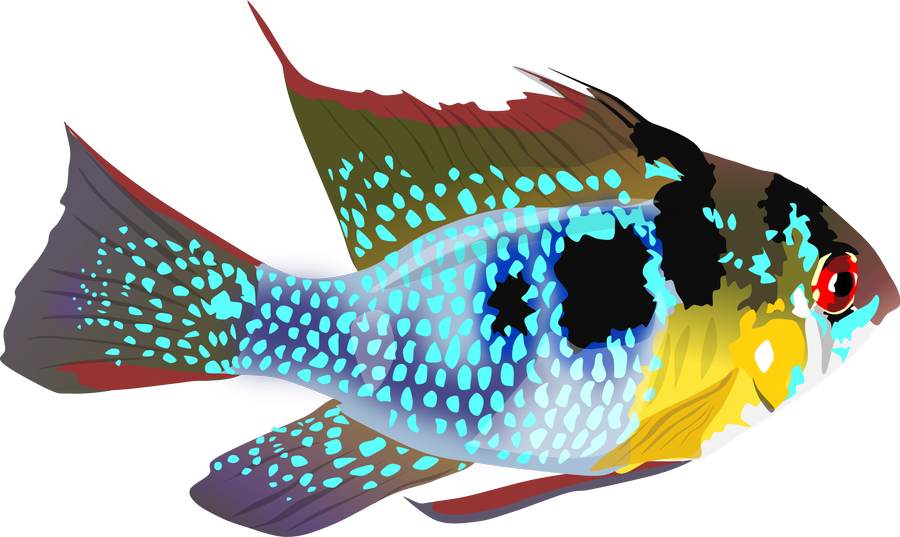
The German Blue Ram cichlid is a vibrant colored fish which needs proper care in the aquarium. The fish has stunning yellow or orange bodies. The bright yellow hues are enhanced by the red marking in the eyes and fins. The fish also has iridescent brilliant blue spots all over its gleaming body. There is a black mark in the form of a vertical sharp strip right through its eye. It also features black spots over the dorsal and pelvic fins. The beauty of this breed of fish is magnificent and thus a favorite in any aquarium.
There are a plethora of Ram cichlids. The German Blue Ram is, however, the most common type of Ram cichlid. Its unique blue and gold-colored dots makes the body sparkle like a precious gem floating in the water. All kinds of this species are very beautiful and thus are in huge demand for everyone eager to have an aquarium.
This beauty of nature is however very difficult to breed. Keeping this fish is not at all easy work for beginners in the practice. This fish is most sensitive. It can detect any slight change in the water environment and this change has detrimental effects to the breeding of the fish.
German Blue Ram: Mikrogeophagus Ramirezi
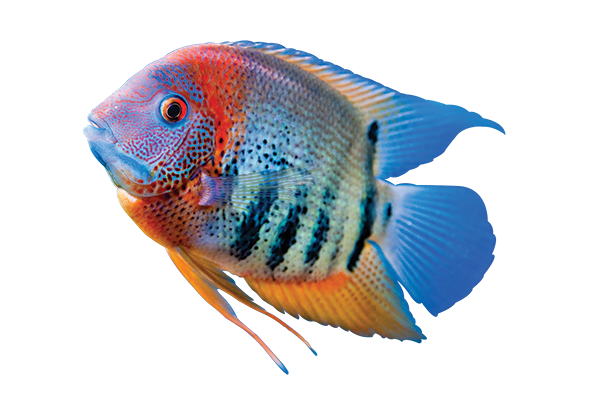
Mikrogeophagus ramirezi is the Binomial name of the German Blue Ram cichlid. The German Blue Ram cichlid is commonly known as the German Blue Ram, Ram cichlid or the Ramirez. This variety of fish is predominantly found in the waters of South America. The fish belongs to the family of Cichlidae. The lifespan of these fishes is around 2 to 3 years. The maximum length of these fishes is around 4 inches or in another system, 10 centimeters. The fishes thrive in mid-water leveled tanks.
The German Blue Ram cichlid is not very active neither is it excessively dormant. A pair of this type of fish has been kept in a 20-gallon fish tank with semi peaceful in temperament. This is the ideal tank size and proper care must be ensured for proper care for the German Blue Ram cichlid.
The temperature of the tank should be maintained at a temperature of 74 to 86 degrees Fahrenheit. The optimal temperature is around 80 to 81 degree Fahrenheit. The hardness of the water must be around 0-12dgH.
Any higher level of hardness can be detrimental for the cultivation of this breed of fish. The pH range of the water level should be around 5 to 7. The aeration should be anything between medium to hard and the filtration provided must be between medium to hard. Harsh Lighting must be avoided. It should be between the varying ranges of low to medium.
Setup of the aquarium For German Blue Ram Chichlid
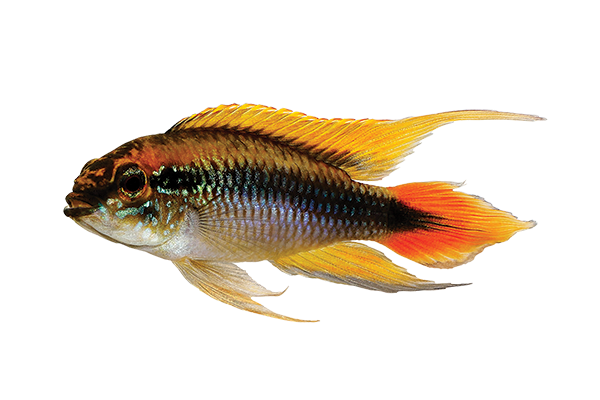
The German Blue Ram cichlid thrives in an open aquarium space. The reason behind the requirement of an open aquarium space is because the they are active swimmers.
The German Blue Ram cichlid also favors hiding their shinning bodies in the caves formed by sea plants. Thus, it is recommended that plants should be arranged in such a manner that they form dense groups.
Plants must not be arranged in a spread-out manner as that would not help the German Blue Ram cichlid to hide their bodies. The German Blue Ram cichlid love caves and hidden enclosures and any form of hollow aquarium decoration will be loved by them. A hollow decoration would give them the coziness of a cave and thus they will move towards that readily.
The German Blue Ram cichlid is extremely sensitive to water chemistry. It dies very easily due to polluted or bad water conditions. Thus, it is vital to keep the water properly stable. The water inside the aquarium must be changed periodically.
The water should also be kept free from any type of pollutants as that would be detrimental to the German Blue Ram cichlid. A good filtration system must be installed for the proper maintenance of the German Blue Ram cichlid’s environment. Water should definitely be replaced every week.
The German Blue Ram cichlid is highly sensitive to nitrogenous toxins like Ammonia and Nitrite which are generated by the fish’s waste and any leftover food. Thus, replacing the polluted water with fresh water is vital for the proper growth of the German Blue Ram cichlid. so I think you should
check out the guide of Saltwater v/s freshwater aquarium.
Another interesting fact about the German Blue Ram cichlid is that it does not display its brightest colors as soon as it is put into an unknown environment. Thus, adequate time must be given to the German Blue Ram cichlid in the aquarium for it to get accustomed to the new environment. Only then, it will start displaying all its wonderful and vibrant colors.
The water conditions in the aquarium must be checked daily for proper care towards the German Blue Ram cichlid. It should be ensured that the water conditions are such that it is good for the German Blue Ram cichlid. As mentioned earlier, the water should have a hardness level of medium to hard.
The temperature should range from 74 to 86 degrees Fahrenheit. Any temperature lower or higher than this mentioned mark is detrimental for the healthy growth of the German Blue Ram cichlid. The pH of the water should be between 5 and 7. The good thing about the German Blue Ram cichlid is that it is rarely infected.
Temperature of The Water & Surrounding Fish Categories
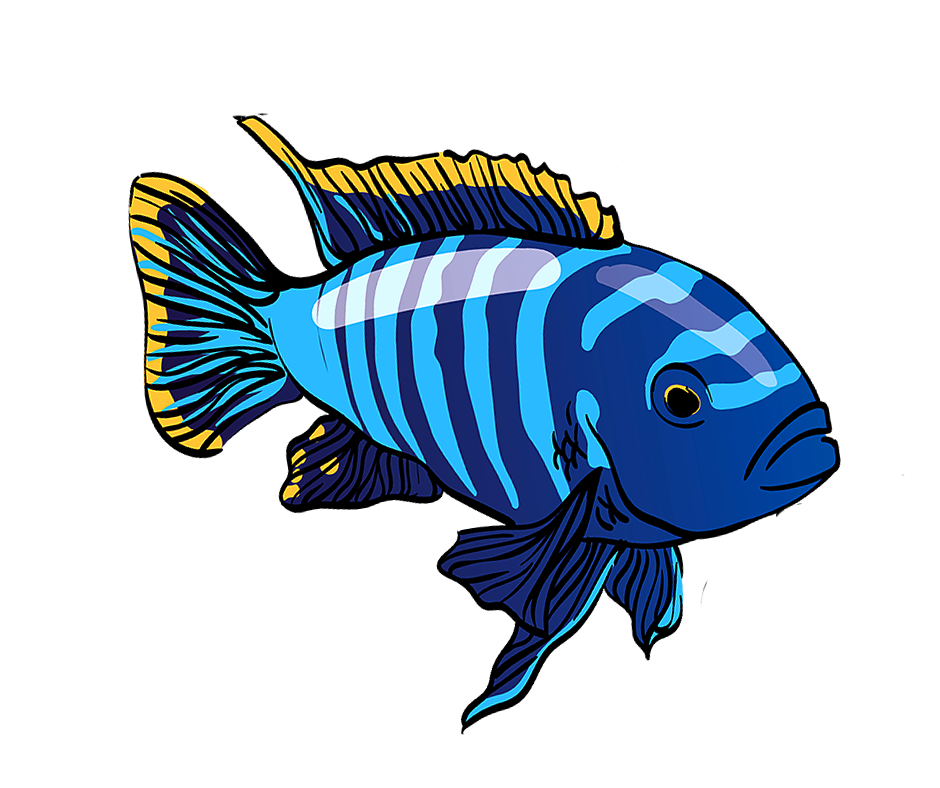
The German Blue Ram cichlids are very jolly fishes. They are extremely adaptable to community environments. The German Blue Ram cichlids will, of course, have their own distinct personalities which will shine apart from the other breeds.
They are known for their social behavior and are most likely to form monogamous pairs. This type of fishes are found calm but sometimes they are found to bickering with themselves. These are not very dangerous fights and thus do not require much attention.
The German Blue Ram cichlids are not really famous as harmful fishes that physically hurt other breeds. It is seen that these fishes can be kept safely in the same water with some Guppies also. The German Blue Ram cichlids are very peaceful and friendly fishes except when they are at the spawning stage.
Proper care should be taken so that the German Blue Ram cichlids are kept in pairs or over three specimens. The tank size must be of 20 gallons or more. The German Blue Ram cichlids are great with fishes of the same size. Thus, they can very easily be kept with the Discus, Gouramis, Loaches, Tiger Barbs, Neon Tetras and other Tetras, Angelfish, and Zebra Danios.
Details About The Diet of German Blue Ram
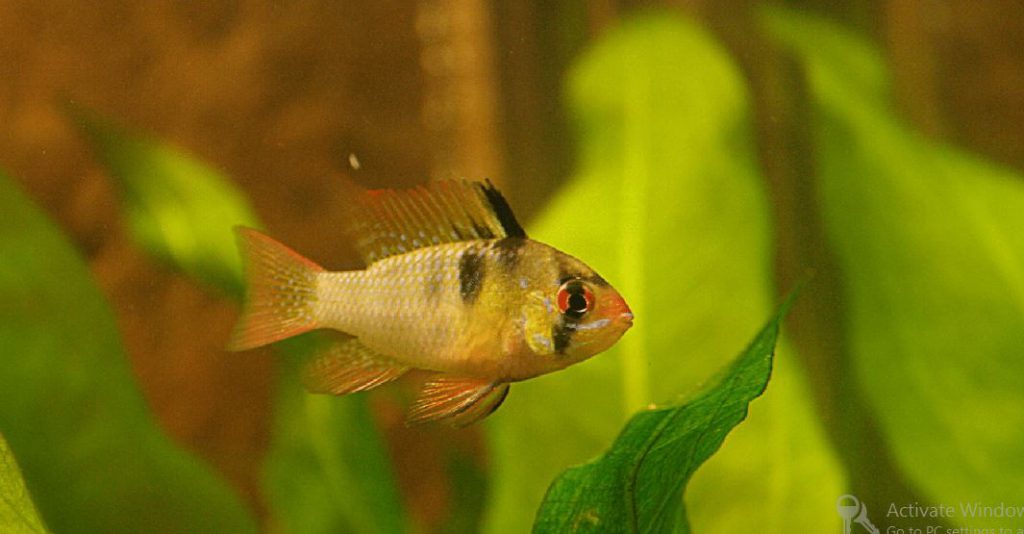
The German Blue Ram cichlids are omnivores. These fish foods even include tropical flakes or granules, freeze-dried foods, and live foods. Sometimes, it is necessary to feed them frozen or live food as that helps them to develop and maintain the vibrant colors in their bodies.
These fishes should also be compulsorily fed twice a day. The amount should be such that they can consume it in 2 to 3 minutes. All other remaining food must be removed as soon as possible. The leftover food is responsible for lowering the quality of the water and this, in turn, affects the health of the fishes.
1. Get a breeding pair
2. Make tank conditions suitable for spawning
3. Care for Blue Ram Fry
4. Feed the Blue Ram Fry
German Blue Ram Cichlids can grow up to 2-3 inches in size at their maturity. Your fish tank may get overcrowded, and it can make your fishes more prone to illness.you can also
How many German blue rams should be kept together?
German blue rams must not be kept in aquariums smaller than 20-25 Gallon. You can keep single pair of German Blue Ram in 20 gallons, but for two pairs you will need at least a 40-gallon fish tank. Bigger the tank, better the living environment for the fishes.
How long do German blue rams live?
German blue ram cichlids can live a life up to 3 years. In the favorable conditions or environment female cichlids can even live longer.
What fish are compatible with German blue rams?
Tankmates are hard to decide. But German blue ram cichlids can have tank mates like –
1. Silver Dollars
2. Dwarf Gouramis
3. Discus
4. Neon Tetras
5. Corydoras
6. Cardinal
7. Plecostomus Catfish
8. Kuhli Loaches
9. Clown Loaches
10. Rummynose Tetras
11. Platies
12. Guppies
13. Mollies
